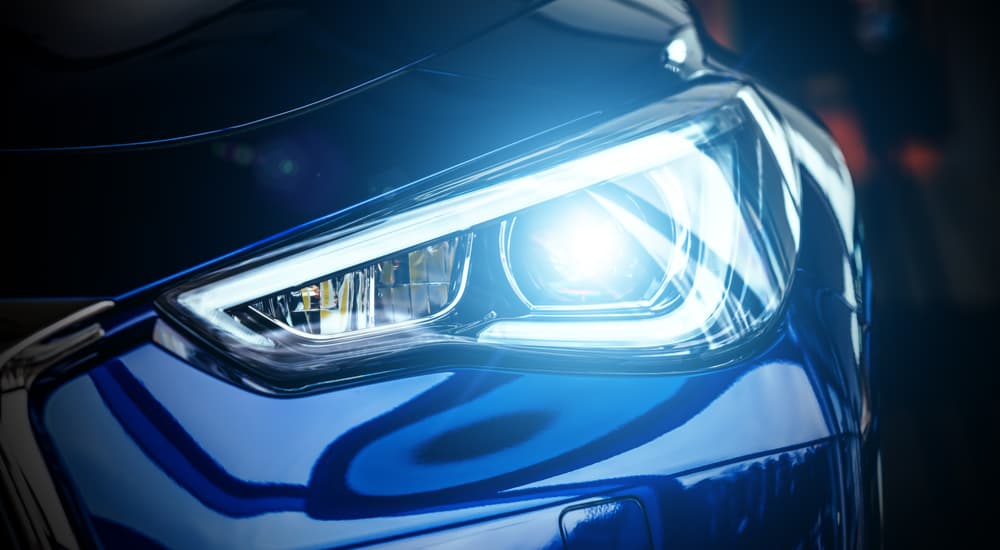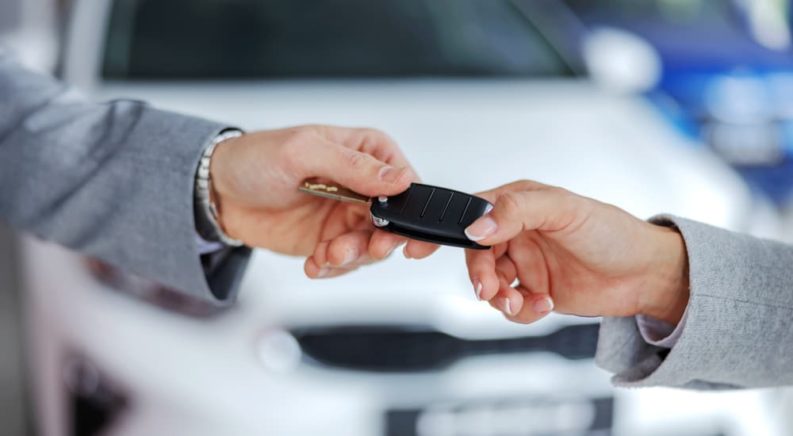Selling your vehicle can be a daunting process, but there are a few simple things to keep in mind as you prepare to put yours on the market. Generally speaking, selling to a dealer is going to require less pre-sale maintenance. Dealers are less likely to be put off by cosmetic defects and have the resources and connections to perform repairs at a much lower cost than you’ll face at your neighborhood garage. A vehicle requiring a lot of work is still going to net you a lower offer, but if you’re looking to save time and leave a little money on the table, it’s an option. Most dealerships aren’t going to be impressed by new fluids, etc., so save your money and spend that time researching your vehicle’s fair trade-in value so you’ll walk into the dealership armed with all the information you need to get a good deal when the time comes to say “I want to sell my car.”
Remember: some buyers might be looking for a project, but a vast majority are seeking a ready-to-drive vehicle with a clean history that won’t give them too many problems. There’s also the issue of overall vehicle value to consider here as well. While some pre-sale repairs and maintenance might make sense for those selling in the upper end of the market, be wary of sinking too much money into older, lower-cost vehicles. There are plenty of affordable and easy ways to get your vehicle ready to sell, so read on for our pre-sale checklist to ensure you walk away from the deal with the best possible price.
Inspection Sticker
Cost: $5-$55
Never underestimate the value of a fresh inspection sticker, especially if you live in one of the states that require annual vehicle inspections. A recent inspection sticker is a huge selling point for any used vehicle. It proves that it’s road-worthy and well-maintained and basically serves as a clean bill of health for your vehicle. It’s one less headache for the buyer and can easily be a make-or-break factor in any used vehicle sale. Assuming you don’t need to make any repairs to earn your sticker, this is one of the most affordable ways to increase your vehicle’s sale value.
Sell Tires
Cost: $80-$150 per tire
Make sure tread is acceptable and PSI is at the recommended level, and replace the tires if the tread is low. Also, consider a pass with the high-pressure washer you’ll find at most car washes. While it really doesn’t have much to do with actual performance, clean tires will simply look like they’ll perform better than a dirty set. A particularly paranoid buyer might even think you’re trying to hide some defects under all that dirt and grime, so play it safe and give the tires and hubcaps a rinse.

Lights
Cost: $20 per bulb
Sprucing up your lights before the sale is a cheap and easy fix that can shave years off a vehicle’s appearance. We’re not talking about simply making sure they all work: that’s still a legal requirement (and one of the easier things to get pulled over for), but rather ensuring that they’re clean and performing well. Replace conspicuously dimmer bulbs for a more uniform look and if you’re up for some scrubbing, consider cleaning the headlight’s lens covers themselves. The plastic shields covering your light assembly can fog up over time, but a quick pass with some toothpaste can work wonders. The mild abrasives used in toothpaste are perfect for bringing some life back into older, foggy headlights, which will make a good impression on prospective buyers.
Brakes
Cost: $250-$400 per axle
Brakes are another area where it’s best to calculate just how much you want to invest. While these should at least be in decent working order if you plan on allowing test drives (or are driving it yourself, for that matter), it’s up to individual sellers to decide whether to fully replace borderline brakes before putting the vehicle on the market. If you’ve had a recent inspection and they passed muster, then it’s probably not too much of a concern, but the added $300-$400 for a complete brake job could be a big turn-off for buyers.
Windows
Cost: $200-$400
It’s all about curb appeal, and a small chip or crack can really hurt the bottom line when selling a vehicle. While you might be accustomed to the small fracture in your windshield, it’ll be the only thing a buyer notices when they step behind the wheel. Windshield replacements aren’t cheap, but unless you’re ready to take well-below market value, add this to your checklist.
Oil Change
Cost: $35 (regular) $70 (synthetic)
A fresh oil change is a great way to entice potential buyers. Not only is this one less maintenance task they’ll have to deal with on their own, but it also signals a car that’s been well-cared for throughout its life. Shell out the $30, keep the receipts to show potential buyers, and if you’re really trying to sweeten the deal, throw a spare bottle of motor oil in the trunk as a freebie (just check the manual to make sure it’s the right viscosity rating for your vehicle). Beware: some buyers might be suspicious of brand-new oil, as it could indicate a seller trying to cover up for a lifetime of poor maintenance with a single oil change right before the sale. For this reason – and many others – it’s never a bad idea to keep a full vehicle history of every repair job and oil change handy.
Fluids and Filters
Cost: $5-$20
While none of these are going to be the make-or-break factor in a sale, it can’t hurt to make sure all your basic fluids are topped off. Make sure coolant and wiper fluid are at a decent level and while you’re under the hood, consider shelling out $15-$20 for a new air filter if the old one is looking conspicuously clogged up. Buyers aren’t likely to check, but it’ll aid in overall performance and make for a smoother test drive. Also, give the engine compartment a quick wipe-down before putting the vehicle on the market. Most buyers will want to at least peek under the hood, and while it’s largely cosmetic, an engine block slathered in dust and soot is hardly an alluring prospect.

Touch-Up Paint
Cost: $20
Nothing like a fresh coat of paint to shave the years off a vehicle, but don’t go too far. Professional paint jobs can get fairly pricey, so unless you’ve got a vehicle in the upper end of the market, a little DIY goes a long way. For around $20, it’s easy enough to find a can of touch-up paint, and while it can be tough to get the color right, there are plenty of resources out there that will direct you to the right hue for your particular make, model, and year. It might take a little trial and error to get the technique down, but it can be invaluable in upping the vehicle’s curb appeal.
Trash, Stickers, Magnets, and Other “Flair”
When removing personal items before the sale, don’t ignore the exterior of the vehicle. While you might be particularly proud of your array of bumper stickers, they can come back to bite you come sale time. Not only can these sorts of decorations make it more difficult for a buyer to imagine themselves driving the vehicle on an everyday basis, but particularly edgy or political bumper stickers or magnets might also be a little polarizing. This isn’t an issue when selling to a dealership, but unless you’re trying to get into an extended political debate with everyone on Craigslist, a little elbow grease and a bottle of Goo Gone go a long way. One more thoroughly modern cleaning task to consider: newer vehicles might store troves of personal data on their onboard infotainment systems, so make sure to reset the system and clear out any saved usernames, passwords, addresses, or payment info before the sale.
Detailing
Cost: $100-$200
A $100 detailing job could make a world of difference when it comes time to sell. First impressions are everything, and if a prospective buyer can tell what you had for lunch yesterday based on smell alone, you’re just robbing yourself. If you’re looking to keep costs down, cleaning the vehicle yourself is easy enough, though some aspects like shampooing carpets and upholstery are difficult without the right tools. Use glass cleaner on the interior and exterior of all your windows and give the dash, doors, and any non-porous surfaces a once-over with some ArmourAll wipes or the like. While it might be tempting to throw in a new air freshener while you’re at it, consider that some buyers might be particularly sensitive to smells or just not a fan of the lilac scent you’ve picked out, so keep it clean and unobtrusive. If you’re doing a deep clean, consider splurging for a new set of floor mats ($10-$50), as the old, filthy ones are likely to detract from all your hard work.
Doing some, or all, of the things we have outlined here will be sure to help you get the most money out of your vehicle when it finally comes time to sell your car.

